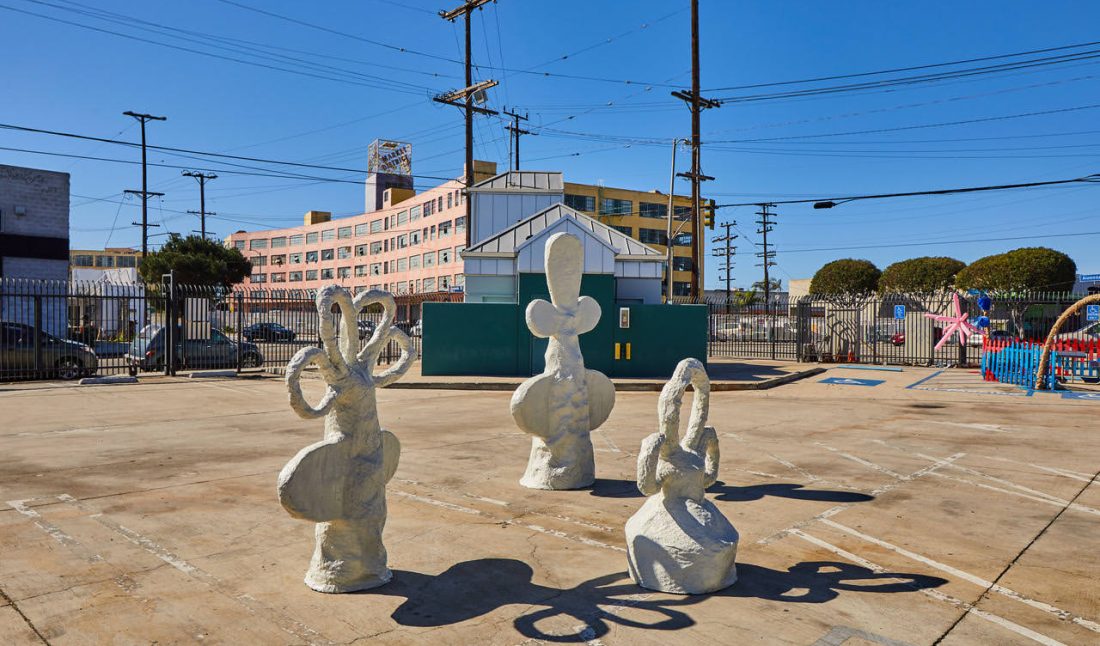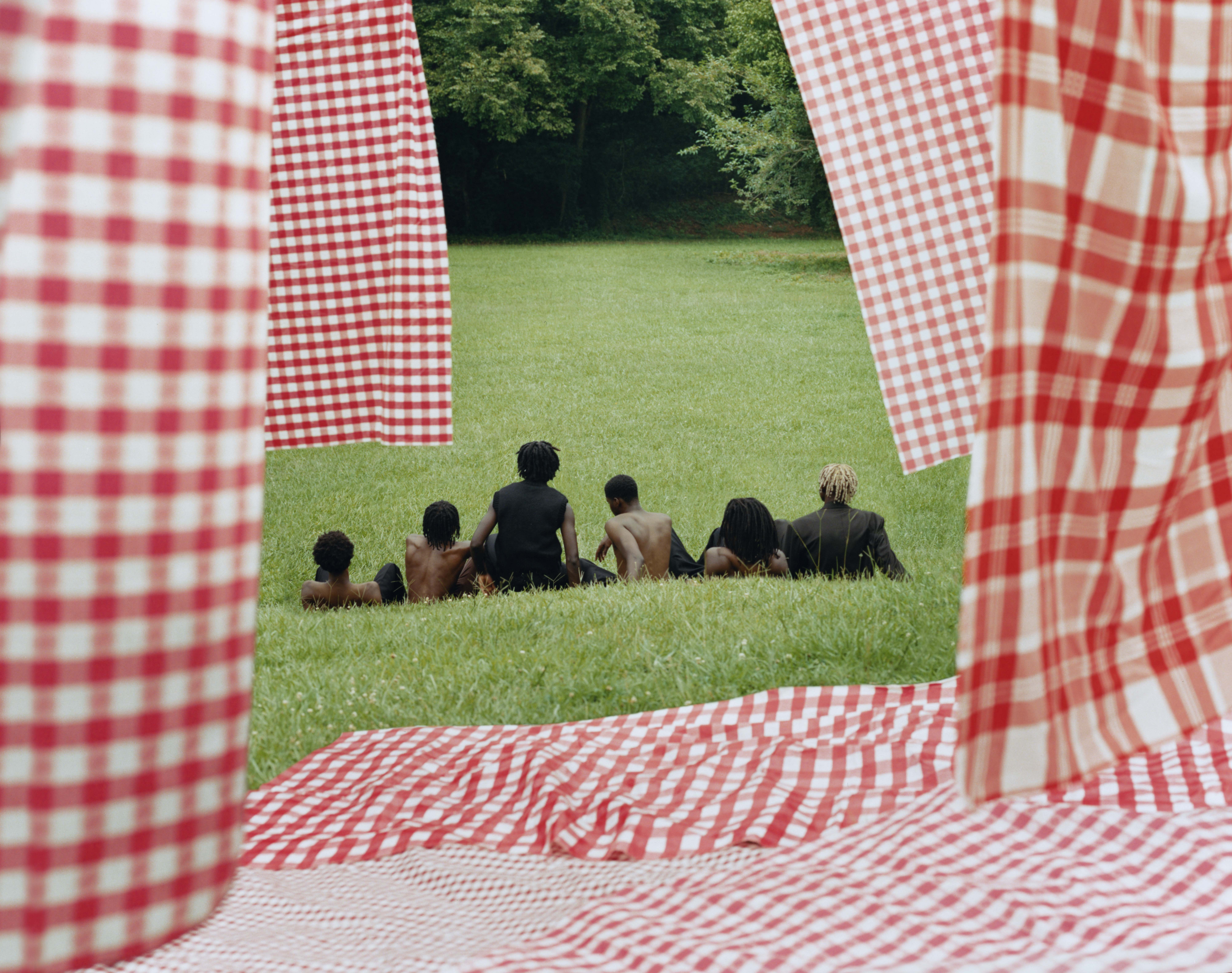February was a total game changer for Los Angeles. The city showed itself to be the land of milk and honey for contemporary art. L.A. art history, long relegated to the margins, was catapulted into the limelight. New art was exhibited next to the old. People who have lived and worked in Los Angeles for some time must have felt equal parts “I told you so,” and also overtaken. A superabundance of gallery openings lent the city a village-like feel. At the end of the month, there was a palpable sense of withdrawal from all the excitement and buzz, the vertigo of opportunities brought by Frieze Los Angeles and other art fairs.
The night before Frieze triumphed on the backlots of Paramount Studios in Hollywood, Swizz Beatz opened “Dreamweavers” at the UTA Artist Space in Beverly Hills. JAY-Z and Beyoncé made a quick appearance. The artist Arthur Jafa mingled with the crowd. Curated by Nicola Vassell (the former director of PACE and Deitch Projects), the group show connected multiple generations of black artists from Hector Hyppolite (b. 1894 in Haiti) and Noah Purifoy (b. 1917) to Tschabalala Self (b. 1990 in Harlem). Purifoy, whose sculpture of a desert tombstone (1995) got lost amid the hips of a gallery crowd, worked as a community artist/activist in Watts following the race riots that broke out in August of 1965. Thousands of black citizens resident to Los Angeles took to the streets in protest of racism, police brutality, and poverty in America (2,300 National Guardsmen appeared in the streets of Los Angeles).
“Dreamweavers” was also a place for Swizz Beatz to exhibit new industry standards, which are his own. The music producer has actively championed artists of color in ways that give them business leverage, linking generations, and overcoming arbitrary divisions between branches of the culture industry. He argues openly on behalf of resale royalties for visual artists.
Frieze welcomed 70 galleries, including upstart and more established LA spaces. Cold drizzle leveled the playing field. A shadowy side of the city came out to play. Fairgoers were introduced to a wide range of viewpoints on Los Angeles, both past and present day. At the booth for Commonwealth and Council (one of the most notable contemporary galleries on the scene), we got to see artworks by Beatriz Cortez and Rafa Esparza. Cortez welds capsule like structures that poetically envision space flight as linked to the survival of indigenous peoples. Esparza turns chicken wire, a sock, thread, and a Nike Cortez shoe into a sculpted suggestion of a hummingbird—a creature that buzzes and blows indiscriminately through botanic pockets of the city.
Ken Price was given his own booth for a series of drawings and ceramic bowls he made in the 1990s—L.A. scenes cropped by the intersections of a freeway. The Box brought back the late Eugenia P. Butler, exhibiting pastel drawings the artist made in the 1990s, long after she’d forged a trail for the Conceptual art movement in Los Angeles and opened her own gallery. Gagosian exhibited loose-leaf drawings marked, it seemed, by the vanguard performance artist Chris Burden. In 1974, Burden famously nailed himself, à la Christ, onto the hood of a VW car in Venice, California.
Photo documentation of a Senga Nengudi performance “Masking It” (1978-9) hung near an exit sign that directed crowds onto a fake set of New York, where you could order Roberta’s pizzas and powerful ceviche. A key figure in the radical, black art movements of both Los Angeles and New York in the 1960s and 1970s, Nengudi joined up with David Hammons to form the collective Studio Z. Their artist group would perform ephemerally under derelict, freeway underpasses.
Ali Subotnick guest curated for Frieze Projects, pulling artist collectives based in Los Angeles onto a movie set of New York—Artists 4 Democracy, the Women’s Center for Creative Work, and A-Z to name a few. The musician St. Vincent performed her album Masseduction in latex on the same city streets a few Octobers ago. Hybrid, humanoid figures sculpted by Karon Davis raised the question of education in America (who has access to it, and how does education intersect with gender, race, and class). Davis co-founded The Underground Museum in Midcity with her late husband, the painter Noah Davis. A solo exhibition of photographs by Deana Lawson replete with crystals was the last of his posthumously curated shows. “Planes” closed out the month of February at The Underground with a soft puff of purple stardust.
People described Frieze LA as small, which is hardly a bad thing. There were moments when the cash cow enterprise of the art fair drowned out the waves of art appreciation grounded in human connection. “Mine has more books,” declared one collector as she stared down a piece by Tavares Strachan mounted to a wall. Jane Fonda and Brad Pitt moseyed through.
Less costly and more accessible art fairs overlapped with Frieze. Felix opened a few hours after at the Roosevelt Hotel. Galleries rented out hotel rooms and exhibited works on beds and in bathrooms. Nicodim Gallery hung some pretty incredible paintings by the rising artist Aaron Gilbert. Bridget Donahue from New York championed L.A. based artist Martine Syms—whose video and performance works muddle the coherence of identity in a digital age. Syms created an awesome video journal for the Financial Times that explored car culture in LA. The artist put pressure on the assumption that everyone drives in Los Angeles (a car is an expense not everyone can afford).
Downtown, SPRING/BREAK turned a row of vacant, produce stalls into gallery alcoves. The artist Nicole Nadeau and Shelter Serra presented “I built a house and no one lived in it,” a sculptural show that conceptually staged the vacant legacy of the post-war American Dream. Nadeau takes the blueprints of model homes her father built and cast them in ceramic. Mounted vertically to the wall, these works invert our sense of space and the permanency of “home.” Nearby, Nadeau built a corner-post, cushioning a wasp nest there—casted in steel.
Hollywood and New York dismissed the quirkier pockets of self expression that were resident to Los Angeles in decades past, but today it is clear that a 40 billion dollar art market, social media, and digital platforms have provided all cities with identical means of global promotion. You can’t help but think about the credit due to resident artists and art workers who stuck with Los Angeles when the going was less visible.











